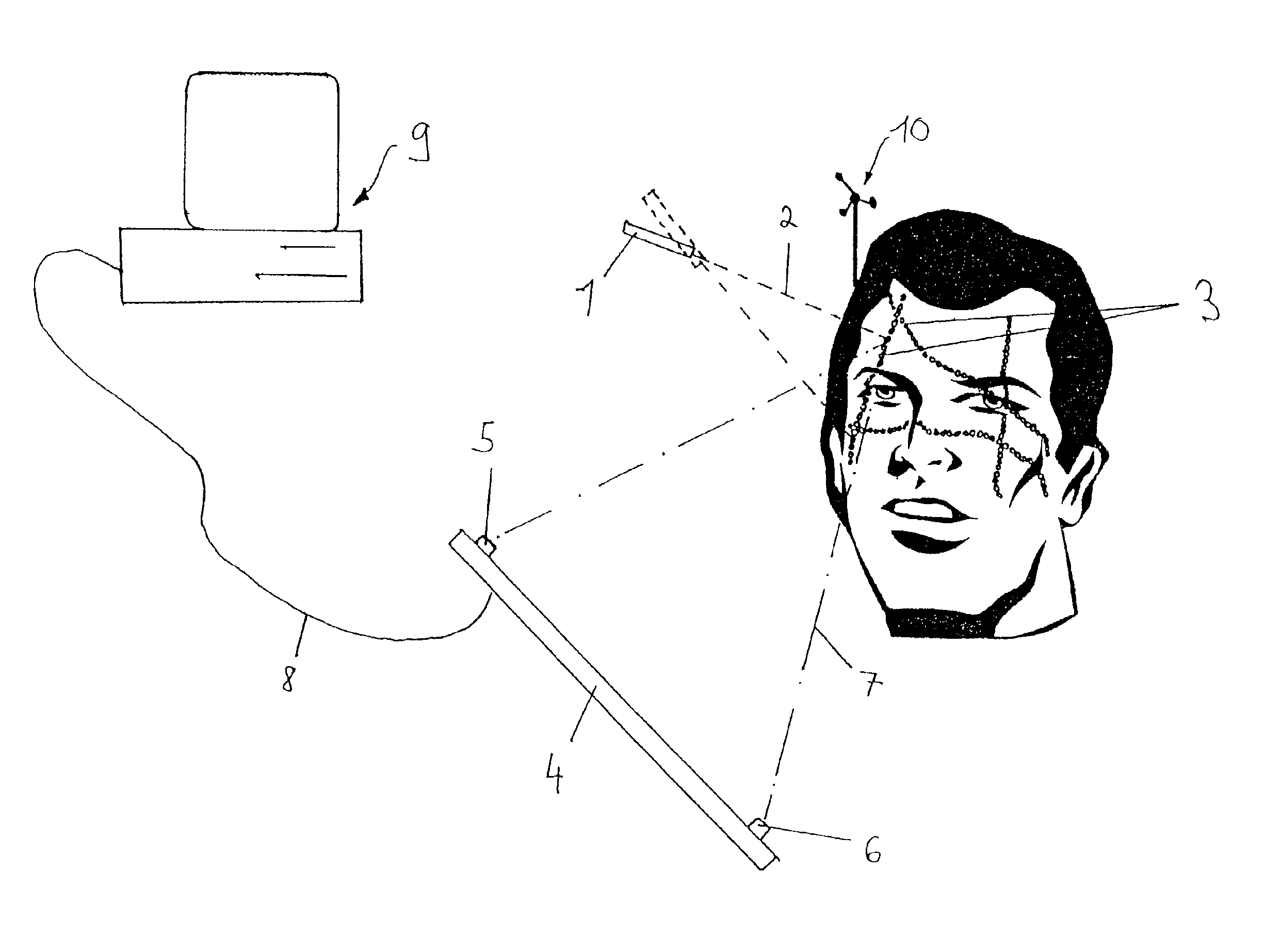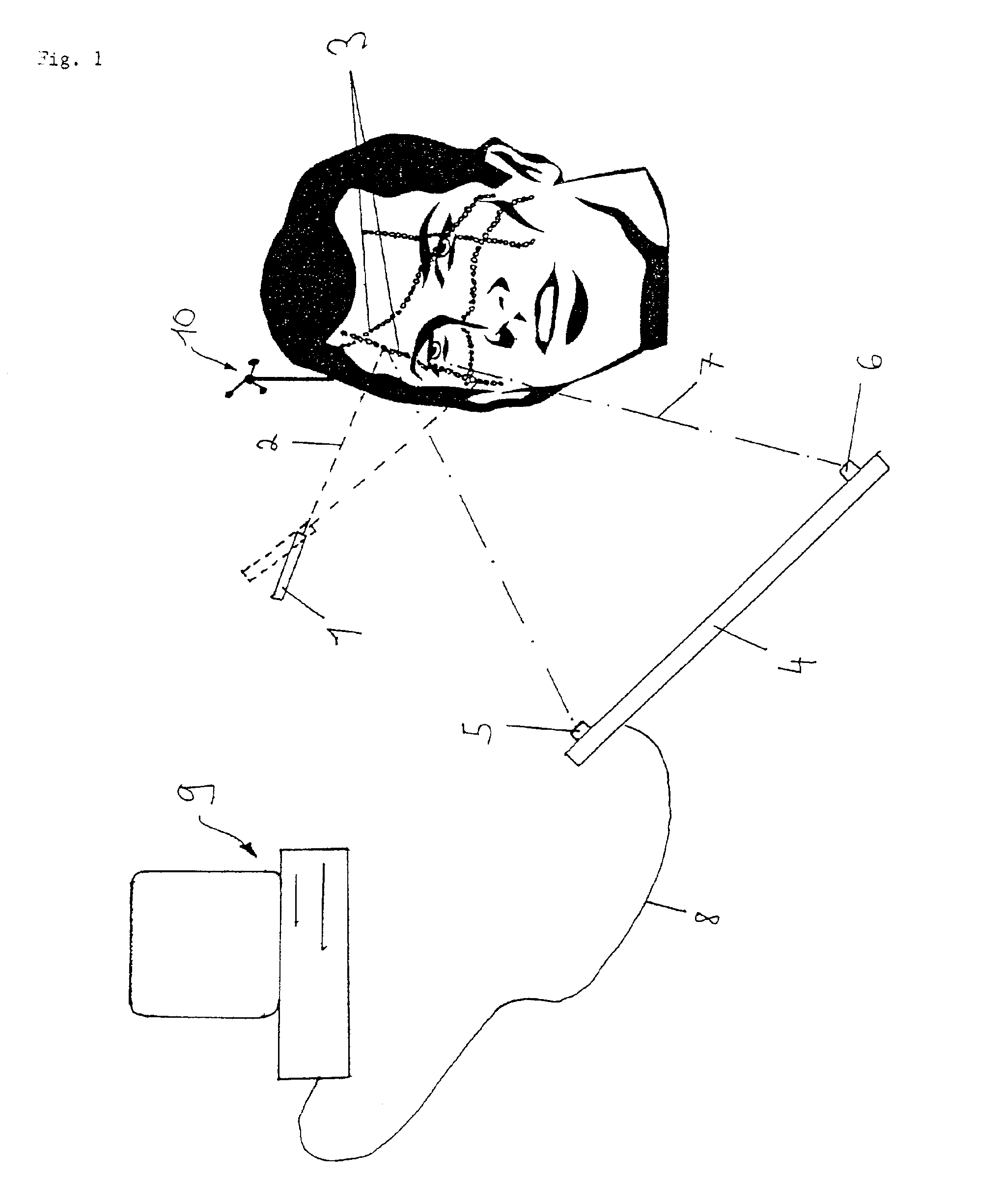Referencing or registering a patient or a patient body part in a medical navigation system by means of irradiation of light points
a technology of which is applied in the field of camera assisted referencing or registering a patient or a patient body part in a medical navigation system, can solve the problems of not using too many artificial markers, inability to accurately reference, and inability to accurately identify patients, etc., to achieve the effect of high accuracy, enhanced accuracy, and easy correction
- Summary
- Abstract
- Description
- Claims
- Application Information
AI Technical Summary
Benefits of technology
Problems solved by technology
Method used
Image
Examples
Embodiment Construction
Referring now to the FIGURE, there is illustrated schematically the computer and display of the camera-assisted navigation system, identified as a whole by the reference numeral 9. This computer is connected to the camera mount 4 via the cable connection 8, two infrared cameras 5 and 6 for monitoring the target area being attached to the camera mount spaced away from each other.
In this case, it is the position of the human head shown that is to be referenced or registered. For this purpose, use is made of the light beamer 1, which projects an infrared laser light beam 2 on the facial surface of the patient. The light beamer 1 is indicated by the broken line in a second position to indicate its constant swinging during referencing.
The facial surface is then scanned by the referencing light beam 2, resulting in light reflections or light spots 3 being produced in sequence on the surface. In the drawing, only a few such light marks are represented by way of example, i.e. by a line of s...
PUM
 Login to View More
Login to View More Abstract
Description
Claims
Application Information
 Login to View More
Login to View More - R&D
- Intellectual Property
- Life Sciences
- Materials
- Tech Scout
- Unparalleled Data Quality
- Higher Quality Content
- 60% Fewer Hallucinations
Browse by: Latest US Patents, China's latest patents, Technical Efficacy Thesaurus, Application Domain, Technology Topic, Popular Technical Reports.
© 2025 PatSnap. All rights reserved.Legal|Privacy policy|Modern Slavery Act Transparency Statement|Sitemap|About US| Contact US: help@patsnap.com


